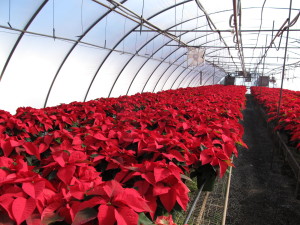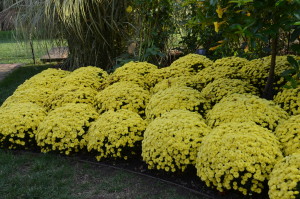“Photoperiodism” or daylength is responsible for triggering flowering in numerous plants. Some examples of short day plants are poinsettias (Euphorbia pulcherrima), fall mums (Dendranthemum spp.), asters (Symphyotrichum spp.), Thanksgiving (Schlumbergera truncata), Christmas (S. bridgesii) cacti, Kalanchoes (Kalanchoe spp.) and Salvias (Salvia spp.).
“Photoperiodism” is the amount of light and darkness a plant is exposed to. The amount of uninterrupted darkness on most types of plants bloom is at least 14 hours long nights (dark) and daylight periods are between 8-10 hours for 6 weeks. Streetlights or indoor lighting may disrupt the dark period and greenhouse growers may need to be covered the crop each night.
Another way of defining photoperiodism is short day plants require a longer period of darkness daily. Short-day plants flower only when daylengths are less than 12 hours per day. The length of dark period is most crucial.
Mums, poinsettias and holiday cacti need less than 12 hours of light daily over six continuous weeks from late spring and early summer. Note: holiday cacti will also initiate flower buds when exposed to cool night temperatures between 50-55°F over 4 weeks. However, no flowers will form if night temperatures are consistently above 68°F regardless of light length.
You may also stimulate bloom in long day plants such as lilies, roses, petunias and spinach if daylengths surpass 12 hours. Simply set these plant under lights for a few hours daily beyond natural outdoor daylength for 3-4 weeks. Here, you’re interrupting their night (dark) period.
In a third category are the “day-neutral” plants. They do not depend upon the amount of dark or daylight hours. When these plants reach a certain age or maturity, flower buds are initiated, flowering happens, and later set seeds or fruits. Sunflowers (Helianthus annuus) and tomato are examples of day neutral plants. Strawberries may be classified as either “everbearers”, “June bearers” or “day neutral”, depending on variety.



 Posted in
Posted in 
